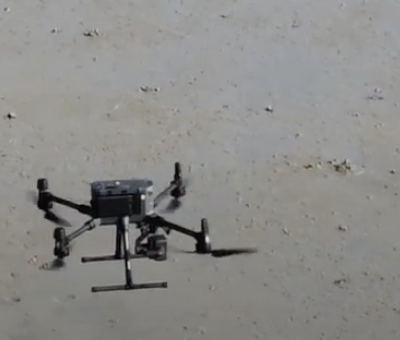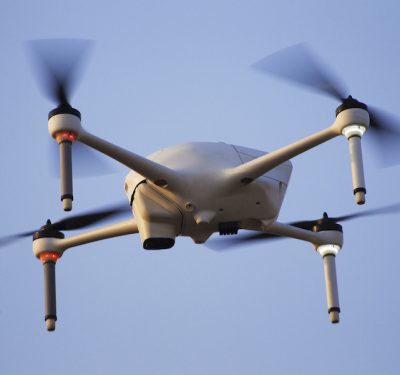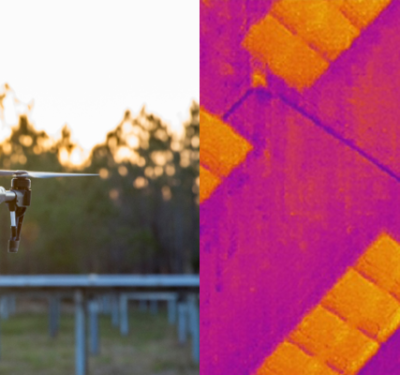At Xponential 2024 in San Diego, Inside Unmanned Systems connected with Product Manager Ken MacLeod and Field Applications Engineer Joseph Botros from Calian to discuss their advanced antenna technologies for UAVs, including their latest smart antennas and the importance of early integration for optimal performance.

IUS: So first question, how long have you been coming to AUVSI’s Exponential?
Ken MacLeod: I’ve been here since 2019, but the company has been coming before that. We haven’t missed any, except for during the pandemic.
IUS: Let’s talk about Calian and a bit of history because there’s been some recent change in ownership and name. Can you talk about that?
Ken MacLeod: So Tallysman was purchased by Calian in September of 2020. Calian is a publicly traded company on the TSX [Toronto Stock Exchange] with around 4000 employees. We are part of the Advanced Technology Group headquartered in Saskatoon, with Calian headquartered in Ottawa. We started doing business as Calian in January of this year. It’s the same products, same company, but with even better support and future growth thanks to the larger resources.
IUS: Larger resources indeed. I think Tallysman’s current and future customers are pretty aware of that transition. So, what are your primary product offerings targeted at the UAS market?
Ken MacLeod: We have three new products we’re showcasing today. We have a lightweight helical antenna ideal for UAVs, a new aerodynamic AccuTena antenna for higher speed installations, and our new smart antennas, which include a smart ceramic patch antenna and a smart helical antenna.
IUS: Before we dive into those, what are some common misconceptions in the UAS market about antennas?
Ken MacLeod: Many don’t think about the antenna until the last minute, leading to suboptimal placement without a ground plane or good sky view. Interference from digital devices on the aircraft can also be an issue.
Joseph Botros: Yes, sometimes antennas are installed near the GPS, causing interference. We provide features in our antennas to help mitigate this.
IUS: Key takeaway: think about your antenna early in the design process to get better performance. Can you talk a little more about your new products?
Ken MacLeod: Sure. Starting with the helical antenna, there’s a trend towards multi-frequency and full-band antennas covering L1, L2, and L5, especially with the rise of Galileo’s high accuracy service and Japan’s centimeter-level augmentation service.
IUS: Multi-signal and multi-constellation are critical for robustness and resilience. Joseph, can you explain how the helical antenna works?
Joseph Botros: The helical antenna has several filaments that work in an anti-phase manner, similar to a battery’s plus and minus. It interacts with the electromagnetic fields to concentrate the signal within the element. It’s very lightweight, making it ideal for UAVs.
IUS: Great. Now let’s talk about the AccuTena line.
Ken MacLeod: The AccuTena line, based on ceramic patch technology, is one of our top sellers. It now supports L6/E6 frequencies. We have versions with 28 dB and 37 dB of gain. Joseph can explain the installation benefits.
Joseph Botros: The patch is good for general integration, aerodynamic, and low profile. It requires a ground plane, so early design consideration is key to maximize performance, especially in constrained spaces.
IUS: Can you compare the use cases for the helical and patch antennas?
Ken MacLeod: Helical antennas are ideal for quadcopters due to their lightweight and lack of ground plane requirement. Fixed-wing aircraft, which need more aerodynamics, benefit from the patch antennas.
IUS: Let’s move on to your new smart antennas.
Ken MacLeod: Our smart antennas integrate GNSS receivers, offering precise GNSS out of the box with a small form factor. They support direction services, L-band correction services, and are compatible with multiple brands like ublox and Septentrio.
IUS: How does this integration benefit customers?
Ken MacLeod: It simplifies the process for customers, providing accurate GNSS with quick convergence times. For example, the ublox version converges to 30-60 millimeters within 40 seconds.
IUS: Joseph, you mentioned a use case from New Zealand?
Joseph Botros: Yes, a customer faced interference issues with their standard antenna. After switching to our smart antenna, all integration issues disappeared, allowing them to focus on their LIDAR services without GNSS problems.
IUS: What does the future hold for smart antennas and their applications?
Ken MacLeod: Smart antennas will drive new applications we haven’t yet contemplated. Their ease of use and high accuracy will enable more efficient operations and faster development cycles for our customers.
IUS: Any closing thoughts?
Ken MacLeod: We’re excited about the future of smart antennas and continuing to provide top-tier support and innovation.






